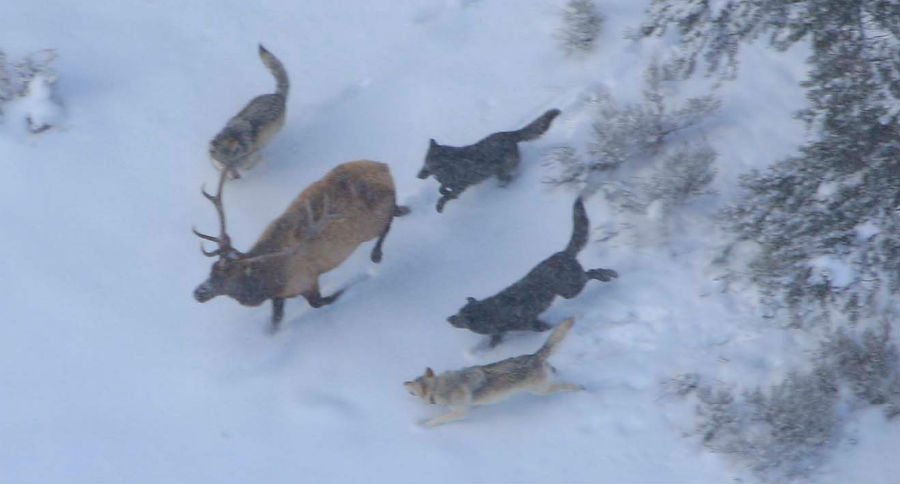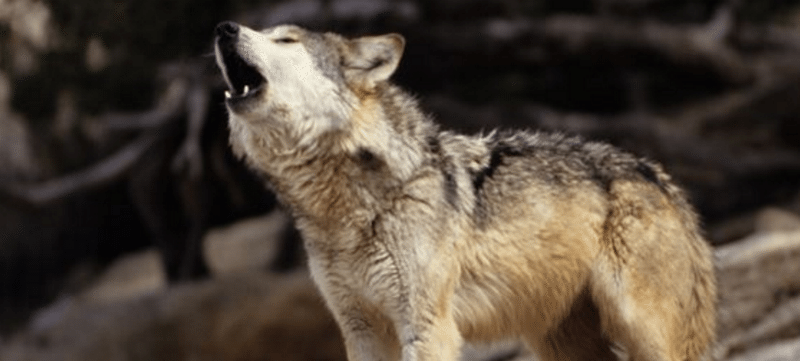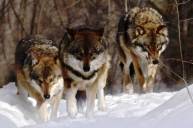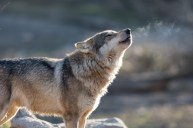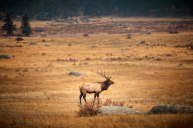The RMEF is issuing a word of warning that animal rights groups are using disingenuous tactics in their attempt to bring wolves onto the Colorado landscape.
As is often the case with environmentalists and animal rights groups, their rhetoric doesn't always jive with the reality of nature. One animal rights group - Turner Endangered Species Fund - has been campaigning to reintroduce wolves onto the Colorado landscape.
To that end, they have been telling Coloradans that "there's no downside and there's a real big upside" to their proposal.
The Rocky Mountain Elk Foundation (RMEF) strongly disputes that claim.
Wolves are near and dear to the hearts of many animal lovers, who view the predators as intelligent and noble caretakers of the wilderness. In that regard, the animal rights groups have done an excellent job in portraying the animal as something much more than it really is.
In reality wolves are a highly efficient predator who can, if left unchecked, wreak havoc on the populations of prey species like elk and deer.
David Allen, RMEF president and CEO, states unequivocally:
"Wolves have a measurable and oftentimes detrimental impact on big game management wherever they go. Their reintroduction into the Northern Rocky Mountains led to a reduction of the Northern Yellowstone herd by more than 80 percent."
"Among other things, wolves also greatly reduced elk numbers to dangerously low levels in central Idaho," Allen continued, "and have a profound impact on declining moose and deer populations in the Western Great Lakes region."
Uncontrolled population growth of wolves in the Great Lakes region is an increasingly controversial subject, as wolves are killing more domestic livestock and pets in recent years.
Currently there is a bill being presented to Congress that is attempting to return control of wolf management to the states. In 2014 the federal government, via the courts, made a blanket ruling to place wolves on the Endangered Species list in all of America, regardless of how well they were doing in individual states. This ruling has not bode well for game populations in many states and regions.
For example, the Northern Yellowstone Elk herd numbered more than 19,000 before wolf reintroduction in the mid-1990s. That number had dropped to below 4,000 by 2012. To be fair, other predator populations - grizzly bear, black bear and mountain lion - had also increased during that time, and they too played a role in the elk decline.
In the Great Lakes region, in 2006 Minnesota's moose population numbered around 8,840 animals, but since dropped 55 percent to an estimated 4,020 in 2016, while the wolf population has exploded far past the state's initial game management goals.
RMEF also accuses the animal rights groups of manipulating the legal system to achieve their goal of unrestricted wolf population growth.
"We have also witnessed time and time again that pro-wolf groups seek to ignore agreed upon population recovery goals, thus moving the goalposts, so to speak, by filing obstructionist lawsuits designed to drag out or deny the delisting process altogether and allowing wolf populations to soar well above agreed upon levels," said Allen.
"These groups totally ignore what they themselves agree to once they get wolves on the landscape and they use lawsuits to manipulate the system, ignoring state-based management," Allen added. "And, in many cases the American taxpayers are paying for their legal fees."
According to RMEF, in the mid-1990s, when wolves were being reintroduced to the states, federal and state agencies agreed to "place them under state management when the original minimum recovery levels reached 100 wolves each in Idaho, Montana and Wyoming. Wolves met those delisting standards in 2002 but 2015 minimum populations were nearly 500 percent above that—786 in Idaho, 536 in Montana and 382 in Wyoming."
In the Western Great Lakes region the overall original population objective was 1,350 animals, but at last count the overall minimum population numbered greater than 3,600, far exceeding desired game management minimums. In short, wolves are running rampant in many regions in a number of states.
Every time the states try to wrest control from the federal government and the EPA, they are inundated with environmental lawsuits from the animal rights groups, causing their efforts to be delayed indefinitely or deny the delisting process altogether.
"An unhealthy and litigious precedent has been set that once pro-wolf groups get a foot in the reintroduction door, they kick it open and file lawsuit after lawsuit to stymy the delisting process while using the wolf as a fundraising tool," declared Allen. "Colorado's elk population will be next in the crosshairs."
"And by the way," Allen closed, "wolves are nowhere near endangered."
Like what you see here? You can read more great articles by David Smith at his facebook page, Stumpjack Outdoors.
https://rumble.com/embed/u7gve.v3tron/
NEXT: This Wolf Howling on a Trail Cam Will Haunt Your Dreams
